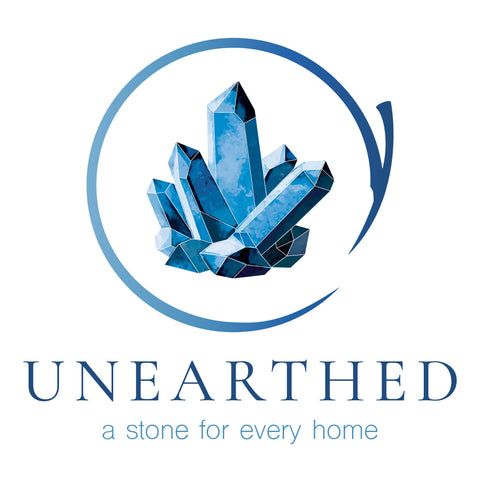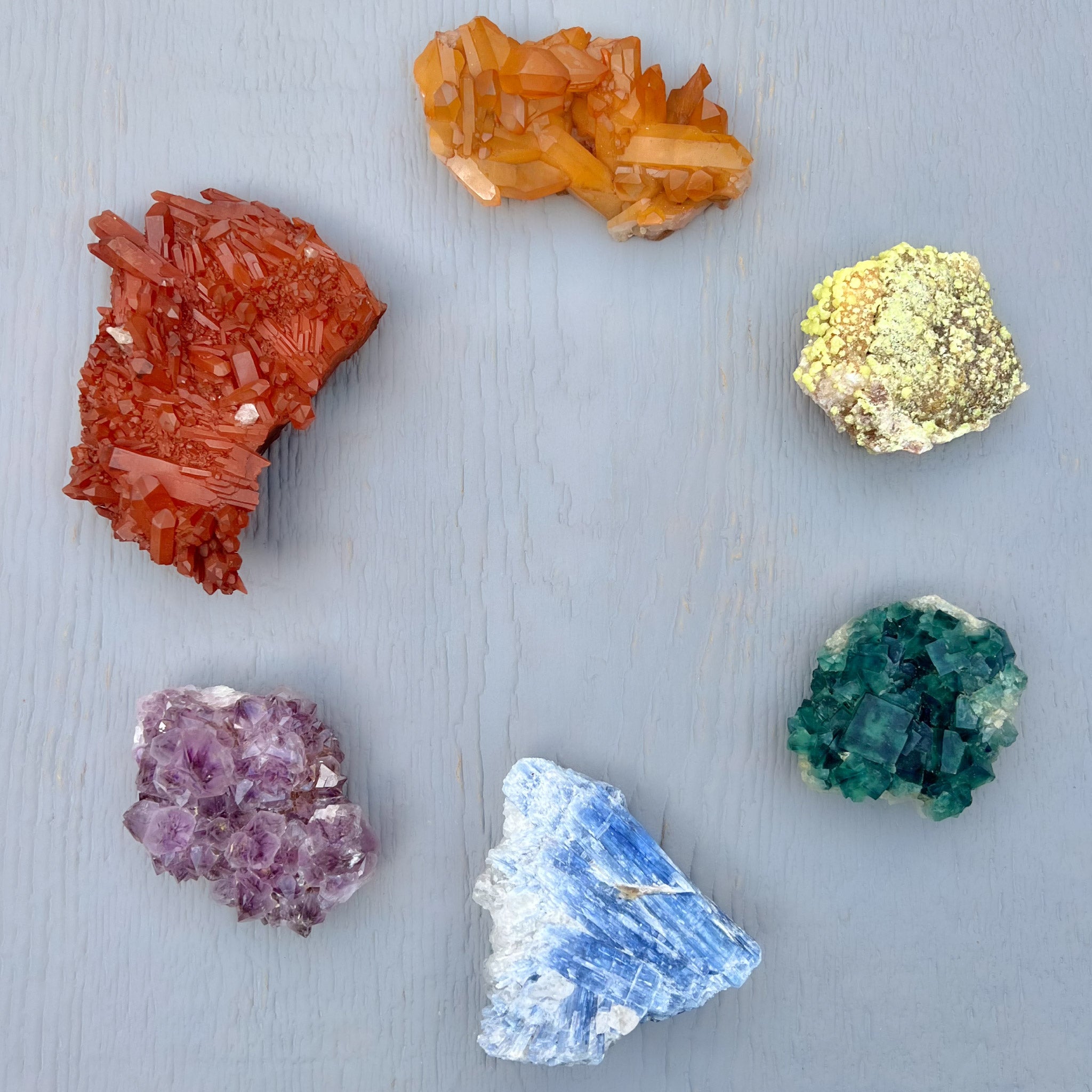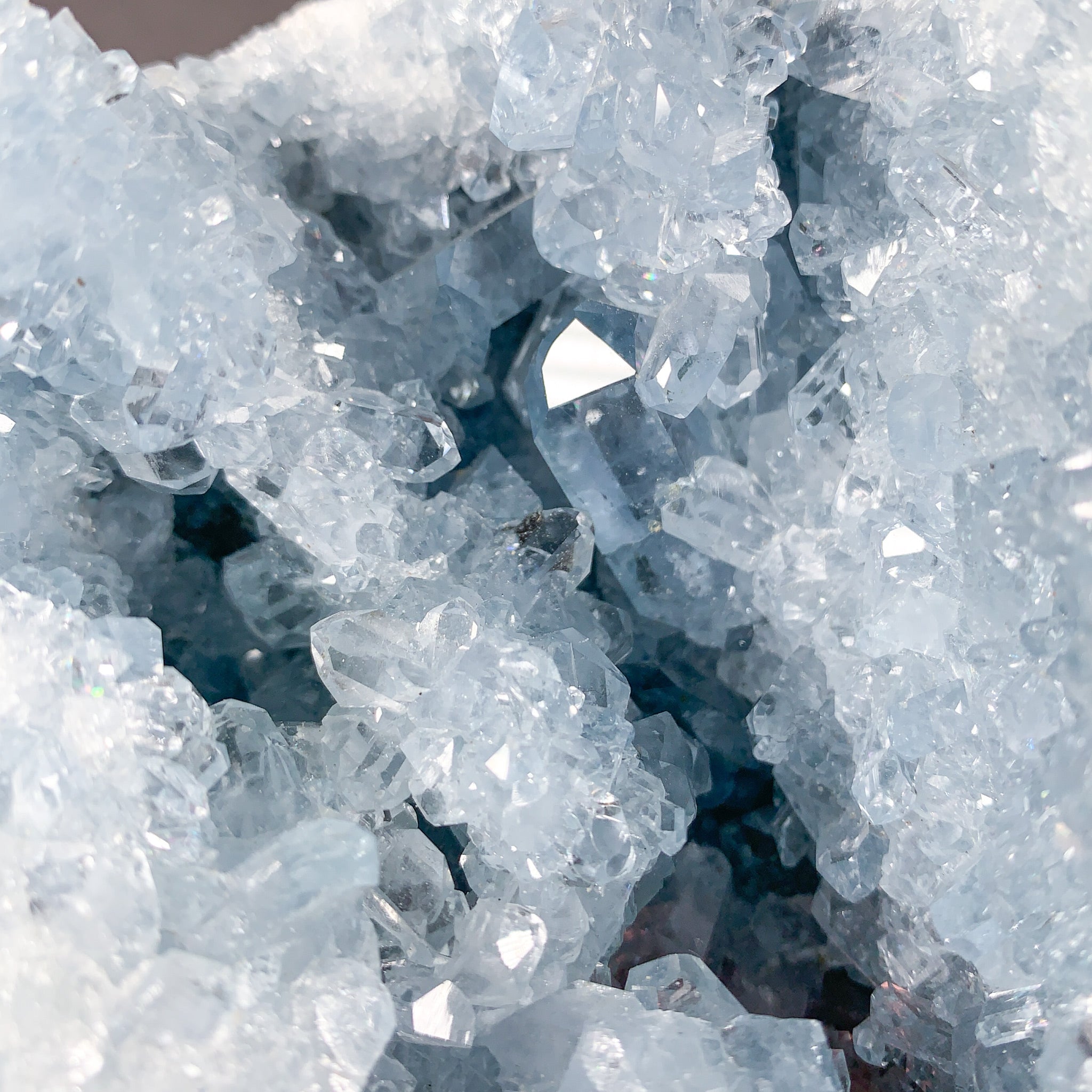Everything you ever wanted to know about Geodes!
Have you ever seen a roundish rock that didn't look like much on the outside but had crystal points, or cool colors hiding on the inside? Maybe you picked up a rock that felt a little too light for its size, like it could be hollow inside? Well, you might have found yourself a geode! While they may not look like much on the exterior, Geodes can contain incredible beauty on the inside. So today, we're going to take a deep dive into these fascinating rock formations!
What is a Geode?
A geode is a type of rock formation with a hollow cavity inside, often lined with mineral deposits and crystals. They are typically spherical or oval in shape, and can range in size from a few inches to several feet in diameter. A geode consists of a hard outer shell which encloses an interior cavity filled with minerals or crystal formations.
Geode Prior to Opening
How Do Geodes Form?
Geodes form within hollow cavities of sedimentary or igneous (volcanic) rock.
Volcanic Rock Geodes
Geodes can form in a variety of ways, but most commonly form within volcanic rocks. As volcanic rocks cool, air and gas bubbles form in the rock, similar to the way holes form inside a loaf of bread. These air pockets create the hollow cavities found inside geodes. Over time, heated mineral-rich fluid flows into the hollow cavity from the surrounding rock. These hydrothermal fluids begin to cool inside the cavity, allowing minerals to precipitate out of the solution, creating bands or layers of crystals inside. Crystals can also form inside the Geodes from mineral-rich fluids slowly seeping into the cavities from the surrounding host rock.
Pink Amethyst Geode
Sedimentary Rock Geodes
Geodes can also form in sedimentary rocks. In sedimentary rocks, Geodes form when organic matter decays and leaves behind a void in the host rock. Over time, mineral-rich water from the surrounding host rock begins to seep into the cavity. As carbonate minerals precipitate out of solution, crystals begin to form inside the hollow creating a sedimentary Geode.
Celestite Geode
How Long Do Crystals Take to Form Inside Geodes?
Whether formed through volcanic or sedimentary processes, the minerals accumulate layer by layer, gradually forming the crystal lining of the Geode. This process may take thousands, or possibly millions of years depending upon the availability of mineral-rich solutions and the rate of deposition. The type of crystals formed within a Geode depends on the specific minerals present in the surrounding environment.
What Types of Minerals and Crystals are Found in Geodes?
Common crystals found within Geodes are silica-rich family minerals such as Quartz, Amethyst, Chalcedony and Agate, carbonates such as Calcite, as well as Celestite (Celestine). The interiors of Geodes may also contain a wide variety of secondary minerals such as pyrite, goethite and limonite.
Where Are Geodes Found?
Some of the most common places Geodes are found are South America (Brazil, Uruguay), Madagascar, and the Southwestern United States.
Why Are Geodes Cut or Cracked Open?
When cut or cracked in half, Geodes display a variety of beautiful minerals, shapes, and colors inside including some very aesthetic and sparkly crystals! Other Geodes containing Agate may show beautiful banded layers corresponding to varied stages of mineralization and crystal growth.
Opened Geode Displaying Crystals Inside
What Do People Do With Geodes?
Geodes create a beautiful and eye-catching display in both homes and offices. They also make incredible gifts! The hardened exteriors of Geodes often make them easier to handle for first-time rock collectors. They also are generally less fragile than other mineral specimens, making them easier to move around your home. Larger paired pieces can also serve as bookends or look nice next to plants. Neutral-toned Geodes containing clear or white Quartz crystals can work beautifully with many different home decor styles. The more vibrant colored Amethyst or Celestite Geodes create an additional pop of color to your space.
Is It a Geode, Concretion, Vug, or Nodule?
What is the Difference Between a Geode and a Concretion?
While both Geodes and Concretions are hard rounded masses with minerals and crystals inside, they form in different ways. Concretions form as a hard, compact mass or aggregate of mineral matter. While they are somewhat spherical, they are also often disk-shaped, oblong, or irregularly shaped. Unlike Geodes, Concretions form around a centralized object typically of organic matter such as a shell, bone, or vegetation (leaves and organic debris). Mineral-rich fluids begin to precipitate around this central nucleus creating layers of harder more weather-resistant mineralization and crystals.
Calcite Concretion
What is the Difference Between a Geode and a Vug?
While both Geodes and Vugs are loosely defined as hollow spaces in rocks which contain crystal-lined cavities, vugs are generally smaller and difficult to extract intact from the host rock. Geodes possess an outer mineral layer which is more resistant to weathering than the original rock it formed in. Because of this, complete Geodes commonly weather out of, or can be extracted from, the host rock they formed in while still maintaining their original shape.
What is the Difference Between a Geode and a Nodule?
While both Geodes and Nodules are generally rounded, Nodules are small, irregular masses of a mineral or mineral aggregate that differs from the composition of the surrounding sediment or rock. They do not contain hollows with crystals inside. Instead, the entire composition of a Nodule is generally all one mass of mineral. For example, a Nodule would be a rounded mass of Pyrite in a Shale bed matrix.
Conclusion
Geodes are special geologic formations with secret treasures hiding inside. Each one is truly unique, with a variety of crystal shapes and colors waiting to surprise us at each opening. Try one out for your collection to celebrate the inner beauty of these crystalline wonders!









